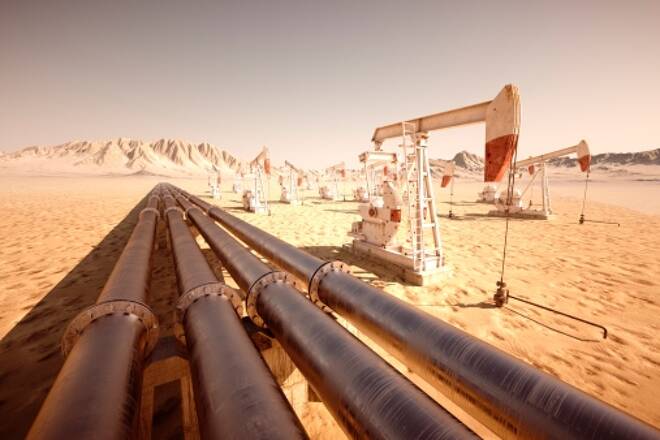Advertisement
Advertisement
Crude Oil, Gasoline & Natural Gas Continue To Climb
By:
Crude oil gained in the Asian session to trade at 102.78 adding 3 points. West Texas Intermediate crude slipped from a four-month high after the Energy
Crude oil gained in the Asian session to trade at 102.78 adding 3 points. West Texas Intermediate crude slipped from a four-month high after the Energy Information Administration said U.S. inventories climbed. Brent declined to trade at 110.90. WTI dropped 0.4 percent. Crude supplies increased for a fifth time in the week ended Feb. 14, and demand for gasoline and diesel decreased, the EIA said. Supplies at Cushing, Oklahoma, shrank while stockpiles along the Gulf Coast gained as the southern leg of TransCanada Corp.’s Keystone XL pipeline moved oil to Texas.
Global data also weighed on the commodity as lackluster PMI numbers in both China and the eurozone. HSBC’s preliminary reading for its purchasing managers’ index (PMI), which
tracks manufacturing activity in China’s factories and workshops, contracted in February to its lowest level in seven months. Gloomy eurozone business surveys also cast a shadow over the commodity. Markit’s Composite Purchasing Managers’ Index for the euro zone dipped to 52.7 from January’s 31-month high of 52.9, missing forecasts for a rise to 53.1.
The United States and emerging nations are expected to argue over the winding down of the U.S. Federal Reserve’s large-scale monetary stimulus when the Group of 20 finance chiefs get together in Sydney on Saturday. Brazil, India, Indonesia, South Africa and Turkey — the “Fragile Five” countries that have massive current account deficits and suffer from high inflation — are likely to say that the U.S. central bank’s move has triggered an outflow of capital from developing nations. But the United States and some other industrialized economies are set to call on the emerging countries to promote necessary structural reforms at home, such as reducing their current account deficits, regarded as a cause of a sell-off of their currencies.
Gasoline prices climbed on Friday morning to trade at 2.8458 after inventories increased slightly the during the week ending February 14, and even considering the recent draws, inventories remain above five-year average levels and modestly above levels at this time of year during the past two years. Gasoline inventories typically build gradually from early November and peak in early February.
This year, inventories rose over a shorter period, but the builds were very pronounced. A period of particularly strong builds occurred from mid-December to mid-January when gasoline inventories increased 15.4 million bbl, 4.6 million bbl (43%) more than typical over this period. At their January 17 peak, total U.S. gasoline inventories were 8.2 million bbl above the five-year average, so even after recent draws inventories still stood 2.7 million bbl above the five-year average on February 14. Inventories can provide a key source of supply during refinery turnaround season, which typically runs from roughly January to April, but can vary regionally.
added 105 points to trade at a new high of 6.151 gaining 1.75% as the cold weather continued to bear down on the east coast of the US. Prices are up 48 percent this year as waves of arctic air boosted demand for heating fuel, cutting gas stockpiles in early February to the lowest level for the time of year since 2004. The contract dropped 1.4 percent yesterday as a government report showed U.S. gas inventories declined less than analysts estimated. Still, prices this week topped $6 for the first time since 2010 on forecasts for a surge of cold air following unusually mild weather this week.
About the Author
Barry Normanauthor
Advertisement
